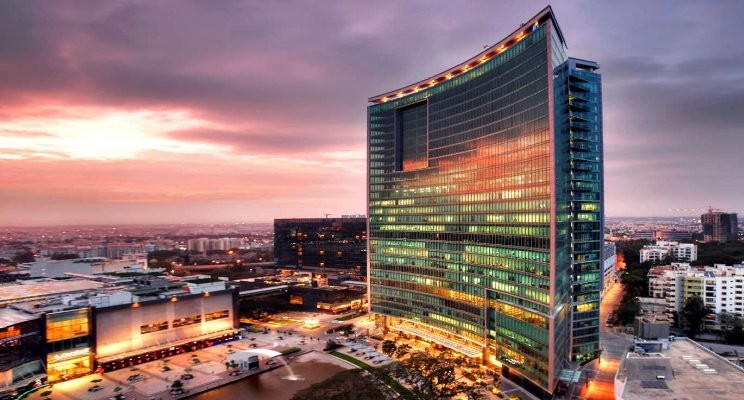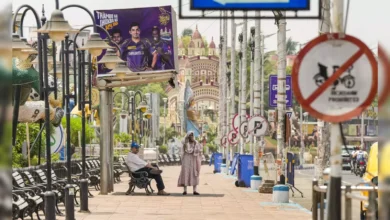Tech boom leaves Bengaluru: India’s Silicon Valley grappling with consequences
The city, home to a staggering $194 billion IT services industry, saw its population more than triple from 1990.

It was a regular January day when Kimsuka Iyer, a native of Bengaluru, noticed ominous red and black X’s and O’s painted on dozens of trees around the lush lake, Sankey Tank. As a marketing executive well-versed with the city pulse, Iyer quickly understood: these trees were marked for felling. Government was planning a highway overpass right by the water’s edge, meaning the trees were inevitably marked for removal, all without resident consultation.
Bengaluru’s Tech-boom and Cost of Progress
Barely a few feet into the story, it reminds us of Bengaluru’s evolution from being India’s preferred retirement destination, boasting a small-town vibe, and a pleasant climate, to being the ground zero for the country’s tech-tsunami. The city, home to a staggering $194 billion IT services industry, saw its population more than triple from 1990. This rapid urbanization has exacted a terrible toll on the city’s natural resources. For instance, the Indian Institute of Science indicates that the city’s tree canopy, which once covered about 70% of Bengaluru, has now shrunk to less than 3%.
The metro, teeming with traffic, even topped navigation software developer TomTom’s list as India’s (and globally the fifth) most traffic-clogged city just last year.
Unplanned construction has blocked many canals, causing massive flooding during storms. Not too long ago, in May, a sudden flash flood claimed the life of a worker from IT giant Infosys Ltd. Heavy rainfall last year witnessed residents sharing images of flooded plush homes and struggling vehicles across news channels and social media. The inundation was so severe, it forced the Outer Ring Road to close, affecting corporate giants like Goldman Sachs Group Inc. and Microsoft Corp.
A city once regarded for its tranquil lakes, charming cottages, and abundance of trees transformed into the nation’s Silicon Valley. But what happens when the demand for growth comes at the cost of the very nature that once defined it?
Impact of the Tech Boom
The population surge has brought traffic congestion, illegal canal infillings leading to severe flooding and resulted in significant deforestation due to construction projects. One such proposed project is a highway overpass in Sankey Tank. In response to the troubling prospect of losing 55 trees, flagged in an environmental impact assessment done by local academics, enraged residents penned letters to city agencies and the Karnataka’s chief minister to halt the project.
Questionable Solutions and Civic Engagement
This saga took a more twisted turn when, during a resident meeting, B.S. Prahalad, a municipal engineer, casually proposed that another overpass in addition to the one planned near the lake was the solution to growing traffic woes. “It became really obvious they hadn’t thought it through,” quips Iyer. “The project literally makes zero sense because it would cause six bottlenecks in that huge stretch. It will make traffic worse from the first day.”
Following this revelation, peeved residents organized a silent march around the lake in February. However, soon they found themselves navigating murky waters as the authorities charged 70 participants with unlawful assembly and dangerous obstruction. They shot back, attesting that “it’s inconceivable that a mere silent walk around a lake by the residents of a community can be interpreted as any crime, let alone such serious ones.”
The Residents’ Stand
Residents around Sankey Tank took inspiration from the persistent activist citizens who protected Bengaluru’s green havens like Cubbon Park from similar development projects. They even hosted a quiet march around the lake dressed in black, as a form of protest and to raise awareness about the environmental impact of infrastructural development. Despite this peaceful protest, many participants found themselves under police investigation for unlawful assembly and dangerous obstruction.
“Once the trees are gone, they’re gone.”, Kimsuka Iyer, a native of Bengaluru
Government Intervention and Planning for Future
Meanwhile, the government is doing its share to hold the reigns of this runaway development. There have been discussions about improving public transportation, expanding the metro system, and even implementing a novel idea of a network of underground highways. Funds have also been sought from the World Bank to enhance the sewage treatment infrastructure and cope with the imminent threats of climate change. Yet, these initiatives are met with prescription of caution by the city’s revenue minister, Krishna Byre Gowda. Gowda underscores that the problems are complex and manifold, indication that the solutions are not going to be quick or easy.
“We have been caught way behind in our planning”, Krishna Byre Gowda, the minister of revenue of Karnataka
All the transformations and turmoil only underscore the effects of a rapidly-growing tech-industry on Bengaluru’s ecosystem. The juxtaposition is a stark reminder of the need for balanced progress that honors both the city’s natural green heritage and its ascent towards technological supremacy.
Please, also have a look into : IAF’s airlift operations transported 68,000 troops to Ladakh during 2020 Galwan Valley Clashes



